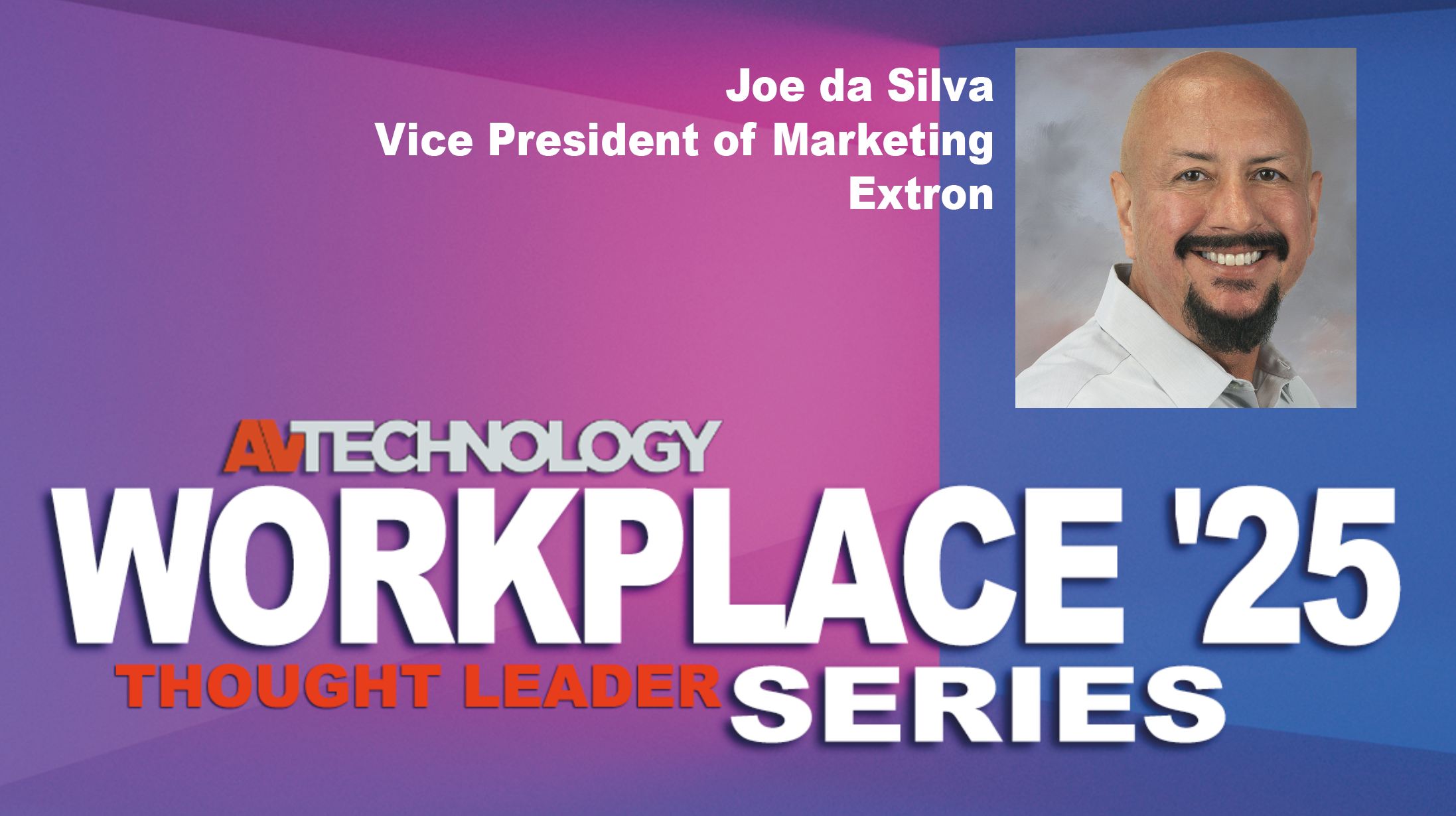AVT Question: Please share how technologies are helping to reshape the workplace and create user-friendly environments.
Thought Leader: Joe da Silva, Vice President of Marketing at Extron
As enterprises and educational institutions continue embracing hybrid models, the AV industry is driving seamless collaboration, engagement, and efficiency. Over the past five years, our work environments have evolved significantly—from a swift pivot to remote work to a gradual return where hybrid work is now the norm.
This shift has prompted a reimagining of traditional spaces. Previously, meeting rooms prioritized capacity and basic AV infrastructure such as projectors, displays, and control interfaces. Today, organizations can design targeted, feature-rich spaces tailored to specific job functions. These rooms focus on collaboration, both in-person and across distances, leveraging automation and user-centric AV technology. The result is a human-centered meeting experience, empowering employees—no matter their location—with tools that enhance connection and productivity.
Demand for platform-agnostic AV systems will rise, reducing friction for employees navigating diverse collaboration tools." —Joe da Silva, Vice President of Marketing at Extron
First off, expect continued growth in AV solutions that integrate with multiple platforms (e.g., Zoom, Teams, et cetera). Demand for platform-agnostic AV systems will rise, reducing friction for employees navigating diverse collaboration tools.
Secondly, real-time hot-desking, room scheduling, digital signage, and interactive displays are transforming workplaces and campuses. These technologies offer live updates, wayfinding, and emergency alerts—delivering contextual, data-driven content based on space occupancy, interactive campus maps, and more.
And finally, 2025 will see sustainability continue to be a priority that influences purchasing decisions. Enterprises and institutions are seeking energy-efficient AV solutions such as auto-shutdown and enhanced sleep mode features, low-power amplifiers, and e-waste reduction programs. Manufacturers are responding with eco-friendly processes that include sustainability, not only in the products they produce, but also in every step of their design, manufacturing, distribution, and eventual disposal.
Also in 2025, the fusion of culture, technology, and space design will continue reshaping how we work and learn—ushering in a future defined by flexibility, connection, and sustainability.

